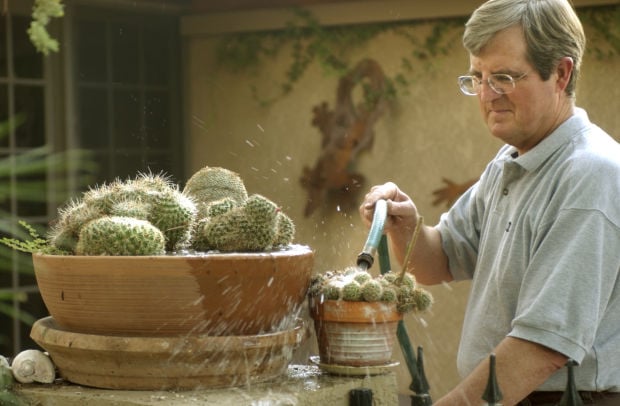GUEST OPINION
/////
The Sonoran Desert Conservation Plan is simply our promise to be responsible stewards of our fragile Sonoran Desert environment for future generations. We must foster land uses that protect our natural landscapes as well as our environmental and cultural resources. This is the basic premise as well as pledge of the conservation plan. We have an ethical obligation to leave this place much as we found it for future generations to enjoy. For the first time, facts, science and a sense of public responsibility will guide future land use decisions, not politics or special interests.
The conservation plan will clearly guide future growth and development. The plan identifies critical and sensitive resources and then assigns high to low values for the conservation of these resources. The concept is simple - where there are high-value resources, it would be wise to build carefully, and where these resources are low or do not exist, building should be encouraged.
Critics of the plan say we will not have enough land left in Pima County upon which to build. They also say the county has developed unreasonable and restrictive regulations, ordinances and policies for building. I would like to address these concerns.
Opponents charge that only 13 percent of the land in Arizona is private and we should do little to regulate the use of this small amount of private land. A great sound bite until you look at the details. In eastern Pima County, 31 percent of the land is private and, more importantly for the future, 33 percent is State Trust Land that will or could become private. Therefore, over 64 percent of eastern Pima County is either developed now or could be developed in the future.
Now let's look at the possible effects of the plan on building. One of the products of the plan has been development of a Conservation Lands System, which is the Environmental Element of the Pima County Comprehensive Land Use Plan, required by the Legislature in 2001. This system assigns conservation goals to lands that contain high-value natural and cultural resources based on factual, scientific and reliable information. The conservation goals for protecting resources varies from as high as 95 percent for riparian areas (remember, it is not smart to build in flood plains) to as low as 60 percent for multiple-use areas. The weighted conservation goal average, based on resource values within the entire Conservation Lands System, is 75 percent. The total land affected by the system outside existing reserves such as national parks and national forests but generally within the unincorporated area is slightly over a million acres. Therefore, approximately 250,000 acres within the Conservation Lands System could be developed and still attain the conservation goals of the plan.
It is also very important to understand that approximately 225,000 acres lying outside the Conservation Lands System are essentially vacant, within or near incorporated areas, and are prime locations for quality development.
Partially at the insistence of builders, the county recently completed an economic study for the Sonoran Desert Conservation Plan. This study addressed the question of land availability and concludes that we will run out of water long before we run out of land. Our present water supply will support approximately 2 million people, and it will require another 260,000 acres of development to accommodate this population. Given that we could build on 250,000 acres within the Conservation Lands System, and we have 225,000 acres with little resource value in areas for future development, it would appear the land availability crisis claimed by builders is an exaggeration. Essentially we have twice as much land as water for development.
The claim that the conservation plan has spawned a number of new regulations, ordinances and policies is equally wrong. The county has acted, for decades, to protect our most important resources. Mountain park protection began in 1929 with Tucson Mountain Park. The first historic zoning district was enacted in 1972 to protect San Xavier Mission. Pima County began protecting flood-prone and riparian areas in 1974. Cienega Creek, the last lowland- elevation perennial stream in Arizona, was acquired in 1987. A number of ranches destined for urban sprawl have been conserved because of county efforts since 1987. Our knowledge of the biological importance of critical and sensitive habitats dates from 1985 with adoption of the first native plant ordinances. Conservation is not a new or unique concept in Pima County. Very few new ordinances have been adopted as a result of our present conservation efforts.
It seems to me the Board of Supervisors is on the right track with the Sonoran Desert Conservation Plan. They recognize the need to speak not only for the people who live here today, but also for future generations that will follow us. Pima County remains committed to working with the Southern Arizona Home Builders Association for a quality community and improved lifestyle. But wasting our precious natural and cultural resources by building wherever we want is not the answer.
If you would like to know more about the Sonoran Desert Conservation Plan, please visit our Web site at www.pima.gov/sdcp. You can also send comments directly to me at chh@pima.gov.
Chuck Huckelberry is the Pima County administrator.





